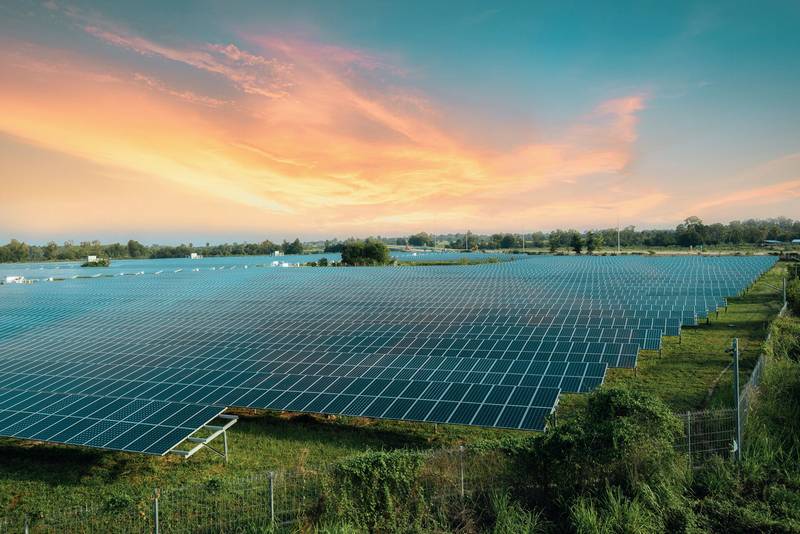Economic Insights: Recovery is off the boil
Update for the month of December 2020
Commentary by Robert F. Baur, Ph.D., executive director, chief global economist
The phenomenal third quarter economic rebound in the Euro area and the United States has come off the boil. The giant surge in new Covid-19 cases across most of Europe may lead to a mild contraction in fourth quarter gross domestic product (GDP). U.S. growth this quarter is mostly set, but a similar flood of recent cases may dent growth early next year.
Widespread use of a new vaccine should bring a robust revival by spring. Recovery in China nears completion, but Japan is progressing only slowly.
Stock markets are giddy with optimism but should have a moderate upside in 2021. Beware the potential for year-end profit-taking.
A November to Remember
Try to remember the kind of November With markets surging and hearts a-twitter. Try to remember the times in November Investors were thrilled and eyes a-glitter. Try to remember the days in November When prices soaring, no one a quitter. Try to remember and if you remember, Then wonder, wonder. Deep in December, it’s nice to remember The times in November with prices rushing. Deep in December we all should remember The fire of November with profits gushing. Deep in December, we’ll have to remember And wonder, wonder, wonder.
Apologies to Harvey Schmidt and Tom Jones who wrote the beautiful song Try to Remember, for the musical comedy The Fantasticks in 1960. But investors have had infinitely few months like the one just past. They must remember this one and wonder if another month will ever grace their portfolios so well. The Dow Jones Industrials Index jumped 11.8%, the best monthly return since January 1987. The Russell 2000 small cap index rocketed 18.3% for the hugest monthly gain since records began in 1978. The uptrend was broad-based with few indices posting negative returns.
Bond investors had their own parade as well. Credit spreads (the difference between corporate bond yields and yields on U.S. treasury bonds of similar maturities) narrowed during the month, offering good returns to owners of most corporate bonds. Yields on long-term U.S. treasury bonds were about flat for the month, so even major indices of U.S. government bonds had decent gains.
Can these gains be justified and prolonged? We think so, at least for a while.
Rising cases, slowing activity
The global economy continues to claw its way back from the worst contraction in eight decades even as the pandemic is trying hard to maintain its iron grip. Another wave of COVID-19 infections is undermining the recovery in many northern hemisphere countries. Russia has hit a new record seven-day moving average of both daily new cases and fatalities every day since mid-October. Euroarea countries began to see a big spike in cases in late September. Fortunately, the average of new daily cases appears to have peaked in mid-November in Italy, Spain, France, Germany, and Austria. New U.S. infections began to surge in early October but the acceleration seems to have crested about ten days ago. Even Japan and South Korea, where contagion has been mostly contained, are seeing fast rising case counts from very low levels.
Despite the second or third wave of infection, the recovery from the lockdown recession is motoring on. China’s aggressive “first-in, first-out” expansion remains a key driver of global revival. When the data comes in for this quarter, China’s GDP will likely have hit a new all-time high, an achievement no other major country will have attained. China’s goods-producing sector led the way during the rebound, spurred by sizeable fiscal stimulus in the form of tax cuts, lower interest rates, easier lending, rebates on export taxes, and lower pension and insurance payments. Exports were boosted at first by foreign demand for pandemic-related equipment. Industrial output continued to surge in October, up 6.9% over the prior year, improving from 5.6% in August and 1.1% in March. Industrial profits have come roaring back.
China’s recovery broadened to include services as households gradually became less restrained. Retail momentum picked up in October; sales were 4.3% over last year, with auto unit sales jumping 12.6%. House prices are robust, up 4.3% year-over-year in October and residential housing starts up 4.5%. Total real estate investment bounced 12.7% over the prior October, the best since July 2018.
China’s recovery and indeed its fast growth in recent years were boosted at least in part by a significant rise in debt. The downside is that what’s borrowed must be eventually repaid. Credit spreads in China have widened recently, according to a recent Bloomberg article, likely due to a spate of corporate defaults by local stateowned enterprises. Very high debt levels suggest that such fast growth won’t be sustainable past the intermediate term.
The flood of new virus cases in greater Europe has been followed by fresh restrictions on economic activity. Falling mobility indices imply the constraints will hamper growth. Surveys of service sector businesses show a broad contraction as the November Markit News index fell to 41.3, well below the break-even level, from 48.0 in September. The supply side of the economy is still advancing with the index for manufacturers at 53.6, 1.2 points lower, but still showing expansion. GDP may contract this quarter from less consumer activity, but the potential for a vaccine early next year and the promise of warmer weather portends well for a robust revival by the second quarter.
Revitalization is in process in Japan, but it’s taking the slow train, which might, of course, make it more sustainable. With China a driving force in Asia, Japan’s October real exports are jumping, up 4.5% from September, the fifth straight monthly gain. Third quarter GDP leapt a crisp 21.4% annualized over the prior period, driven by a 12.1 percentage point gain from net trade as imports plunged. Domestic demand has stayed weak but shows promise. Services spending likely rose in October; mobility indices are trending up; business sentiment is improving for large and small firms; industrial output is up four months in a row; and third quarter private core machinery orders have quit falling, up 0.2% in the third quarter from the second. We look for recovery in the world’s fourth largest economic area to advance steadily through 2021.
The daily new records in COVID-19 cases, fatalities, and hospitalizations have surely knocked the U.S. rebound off the mind-bending pace of the second quarter. Still, the rebound keeps rolling and recent data show a robust uptrend in October. Shipments of real nondefense capital goods ex aircraft are the highest since 2015. Economy-wide profits from the National Income and Product Accounts hit a new all-time high in the third quarter. New and existing home sales are the best since 2006. Surveys of U.S. purchasing managers are running hot. The National Association of Home Builders confidence index hit new consecutive record highs the last three months. The American Staffing Association index of temporary help payrolls keeps improving. Job growth has been exceptional, with more than 2.2 million jobs added in the October household survey.
Mobility indices, OpenTable reservations, and TSA travel counts did tick down in November, as has consumer spending estimated by JP Morgan Chase credit card data and tracktherecovery.org. Still, there are reasons to believe healthy momentum will persist.
• Inventories are very low. Rebuilding will add to growth.
•Household formation is rising fast. Mortgage rates stay at all-time lows. House prices are surging. All will keep housing activity booming.
• Net exports have subtracted from growth as imports vaulted, while exports stayed low. U.S. exports will add to growth when other countries rebound.
• Capital spending will stay vigorous as companies strive to cut costs and increase productivity.
• Job growth has been excellent. Rising total income from new jobs and a still-high savings rate imply consumers have funds aplenty to keep purchasing.
We expect U.S. GDP to rise in the 5% to 8% range annualized this quarter, as much of the growth has already occurred. The recent rash of virus activity could spill over to slow growth in next year’s first quarter. After that, we’d expect the vaccine’s arrival to bring a couple of quarters of 4% to 5% growth in GDP reaching a new high at the end of 2021.
Looking ahead
The astounding resurgence in third quarter growth, and the optimism displayed in bond and stock markets since the spring, is owed in large part to substantial fiscal spending combined with aggressive monetary policy all over the world. U.S. authorities boosted fiscal spending by trillions of dollars and the Federal Reserve (Fed) put generous funds to work backstopping bond markets. The European Central Bank deployed new resources to keep lending channels open and the European Union (EU) had plans to implement a €750 billion package of loans and grants to member countries to salve the crisis wounds. Commensurate action has occurred in most countries.
The question is what happens next. Regardless of the outcome of the Georgia Senate elections, we expect a phase four stimulus package to be enacted by January. The $455 billion requested by Treasury Secretary Mnuchin to be returned by the Fed may be used as part of that package to make the next bill palatable to Senate Republicans. There’s a trickier problem in Europe: Poland and Hungary vetoed the €750 billion recovery fund, perhaps to gain leverage over a new mechanism that could inhibit funds from flowing to certain member countries. Since both countries stand to gain from EU disbursements, the conflict may dissipate eventually. However, that may slow the delivery of recovery funds and delay the recovery.
It’s possible the global recovery may languish over the winter from the flood of new COVID-19 cases. Nevertheless, solid growth should reemerge with good momentum by spring. It appears at least one of the new vaccines will become widely available and the world economy will steadily return to some sort of normal. It will surely be a changed economy after the tumult, isolation, and forced innovation in response to the extraordinary pandemic shock.
We’ll all spend the next couple of years trying to understand what the long-term New Normal actually entails.
Financial market outlook
Looking ahead, it’s very important to distinguish between an intermediate time frame of six to twelve months versus a much longer period—such as the rest of this decade. This analyst has been suggesting for months that the long-term investment climate will be much different from what we’ll experience in 2021 or early 2022.
After a fabulous rally in November and indeed since the low in March, it’s possible that December could see significant year-end profit-taking. With a vaccine likely on the way, corporate profits rising swiftly, the global recovery still rolling along, interest rates at superlow levels, and plenty of stimulus still in the pipeline, stock markets should have some modest upside into mid-2021 or beyond.
The upturn from here will probably be limited because equity investors are already giddy with enthusiasm and U.S. stock markets are very highly valued. Put/call ratios suggest investors have little fear of a downdraft. Price-earnings ratios are at or near the peaks of previous bull market tops. Still, the S&P 500 Index should be able to reach the 4000 level by next summer.
Pandemic uncertainty, vast central bank backstops, and government largesse set the perfect environment for the enormous outperformance of tech and growth stocks. But it does appear that the huge valuation divergence between growth and value has peaked. A vaccine promoting a return to normal will make a good climate for small cap and emerging market stocks, as well as sectors like materials, energy, industrials, and financials. Any yearend profit-taking correction might be a good time to rebalance portfolios away from an overweight to growth and tech. With the U.S. dollar likely to weaken further, emerging market equities would be the primary beneficiary.
For bond investors, central banks will keep short rates pegged very low for a year or two. Yields on long-term safe-haven bonds should see some mild upward pressure next year and into 2022. We’d keep maturities in the two- to four-year range and stay up in quality in the non-traditional fixed-income space, using emerging market, high-yield or municipal bonds, or preferred securities. It’s still time to avoid long-term government bonds.
Expressions of opinions and predictions are accurate as of the date of this communication and are subject to change without notice. There is no assurance that such events or prospections will occur and actual condition may be significantly different than that shown here.
Disclosures:
Investment involves risks. Past performance of any particular fund or product mentioned in this document is not indicative of future performance of the relevant fund or product, and the value of the each fund or product mentioned in this document may go down as well as up. You should not invest solely in reliance on this document. There is no assurance on investment returns and you may not get back the amount originally invested.
You should consider your own risk tolerance level and financial circumstances before making any investment choices. If you are in doubt as to whether a certain fund or product mentioned in this document is suitable for you (including whether it is consistent with your investment objectives), you should seek legal, financial, tax, accounting and other professional advice to ensure that any decision made is suitable with regards to that your circumstances and financial position, and choose the fund(s)/product(s) suitable for you accordingly.
The information contained in this document has been derived from sources believed to be accurate and reliable as of the date of publishing of this document, and may no longer be true, accurate or complete when viewed by you. The content is for informational purpose only and does not constitute an offer, a solicitation of an offer or invitation, advertisement, inducement, representation of any kind or form whatsoever or any advice or recommendation to enter into any transactions in respect of the funds/products referred to in this document. This document is not intended to be relied upon as a forecast, research, or investment advice regarding a particular investment or the markets in general, nor is it intended to predict or guarantee the performance of any investment. The information does not take account of any investor’s investment objectives, particular needs or financial situation. You should not consider the information as a comprehensive statement to be relied upon. All expressions of opinion and predictions in this document are subject to change without notice.
All figures shown in this document are in U.S. dollars unless otherwise noted.
Subject to any contrary provisions of applicable law, neither the companies, nor any of their affliates, nor any of the employees or directors of the companies and their affliates, warrants or guarantees the accuracy of the information contained in this document, nor accepts any responsibility arising out of or in connection with any errors or omissions of the contents set out in this document.
This document is the property of Principal Investment & Retirement Services Limited that no part of this document may be modified, reproduced, transmitted, stored or distributed to any other person or incorporation in any format for any purposes without Principal Investment & Retirement Services Limited’s prior written consent.
The content of this document is provided by Principal Global Investors. Principal Global Investors leads global asset management at Principal® and includes the asset management operations of the following members of Principal ® : Principal Global Investors, LLC; Principal Real Estate Investors, LLC; Principal Real Estate Europe Limited and its affiliates; Spectrum Asset Management, Inc.; Post Advisory Group, LLC; Columbus Circle Investors; Finisterre Capital, LLP; Origin Asset Management, LLP; Claritas Investimentos; Principal Global Investors (Europe) Limited; Principal Global Investors (Singapore) Ltd.; Principal Global Investors (Australia) Ltd.; Principal Global Investors (Japan) Ltd.; Principal Global Investors (Hong Kong) Ltd., and include assets where we provide model portfolios. Marketing assets under management include certain assets that are managed by Principal International and Retirement and Income Solutions divisions of Principal.
© 2020 Principal Financial Services, Inc. Principal, Principal and symbol design, and Principal Financial Group are registered trademarks and services marks of Principal Financial Services, Inc., a Principal Financial Group company.
This document has not been reviewed by the Securities and Futures Commission.
This document is issued by Principal Investment & Retirement Services Limited.
Website: www.principal.com.hk
Address: 30/F, Millennium City 6, 392 Kwun Tong Road, Kwun Tong, Kowloon, Hong Kong








